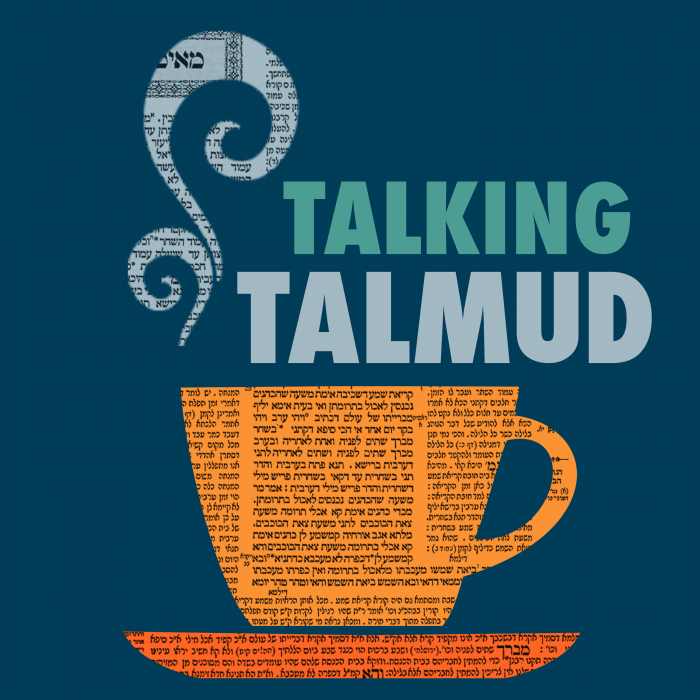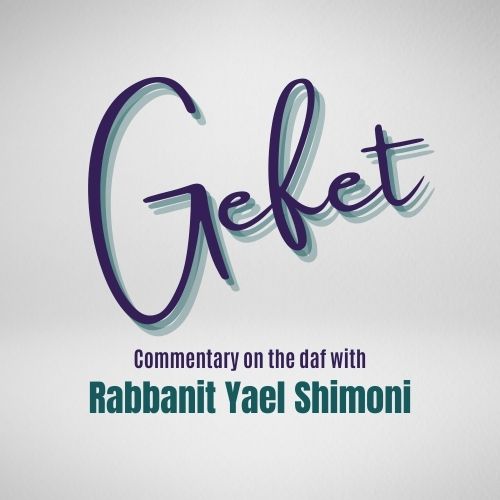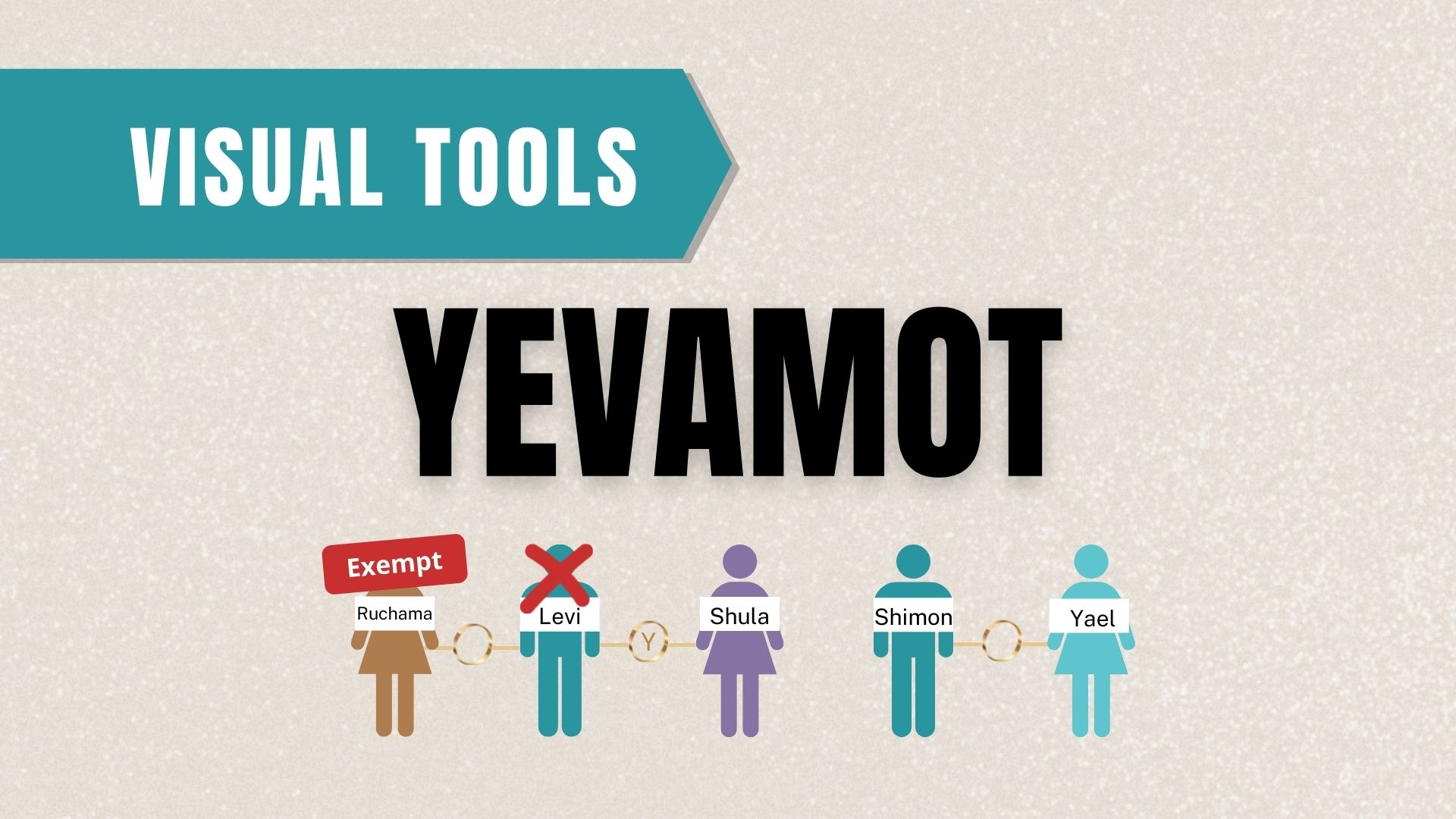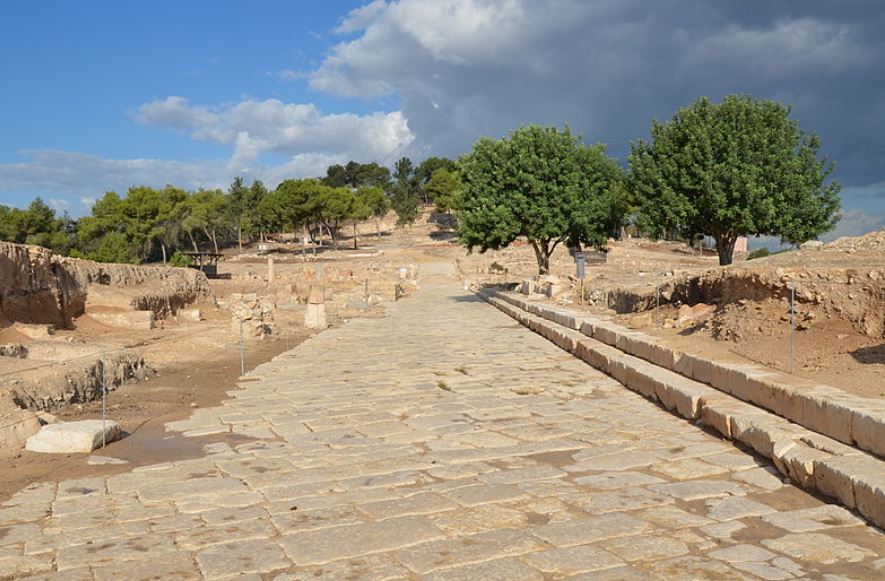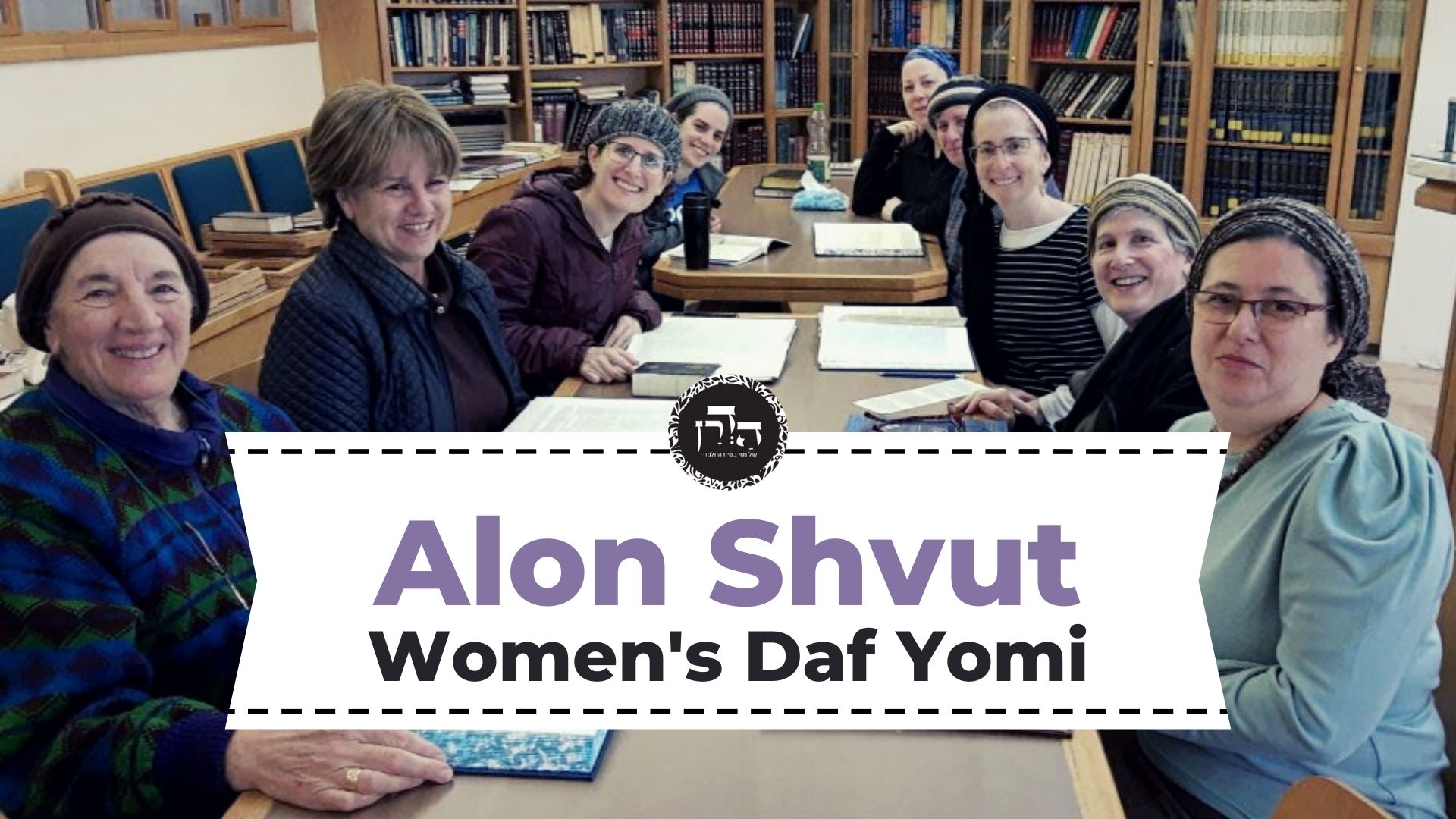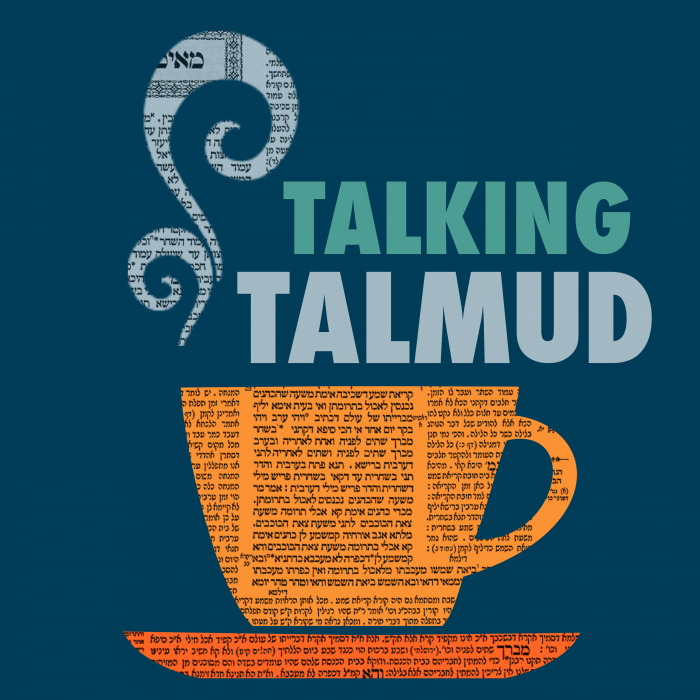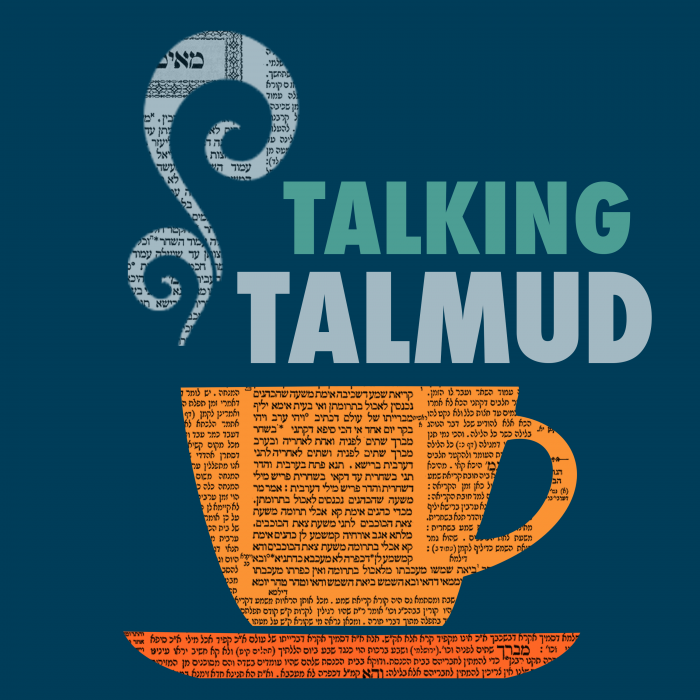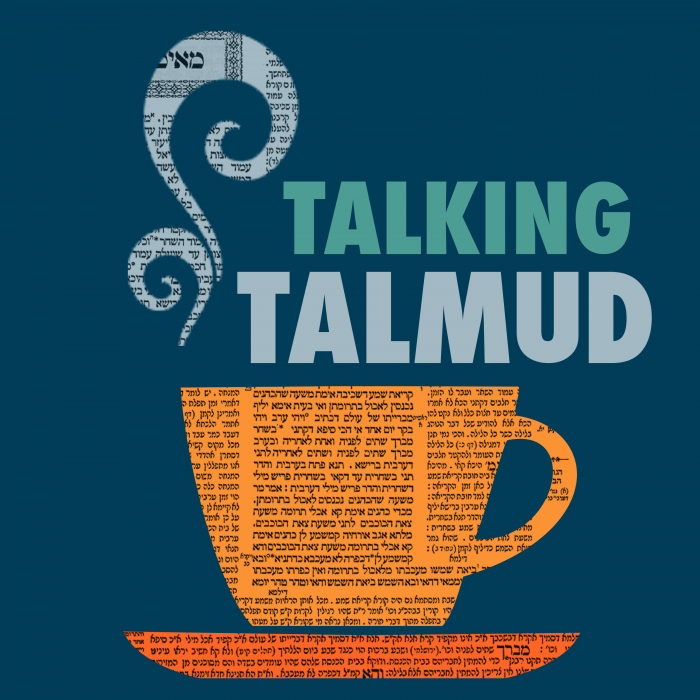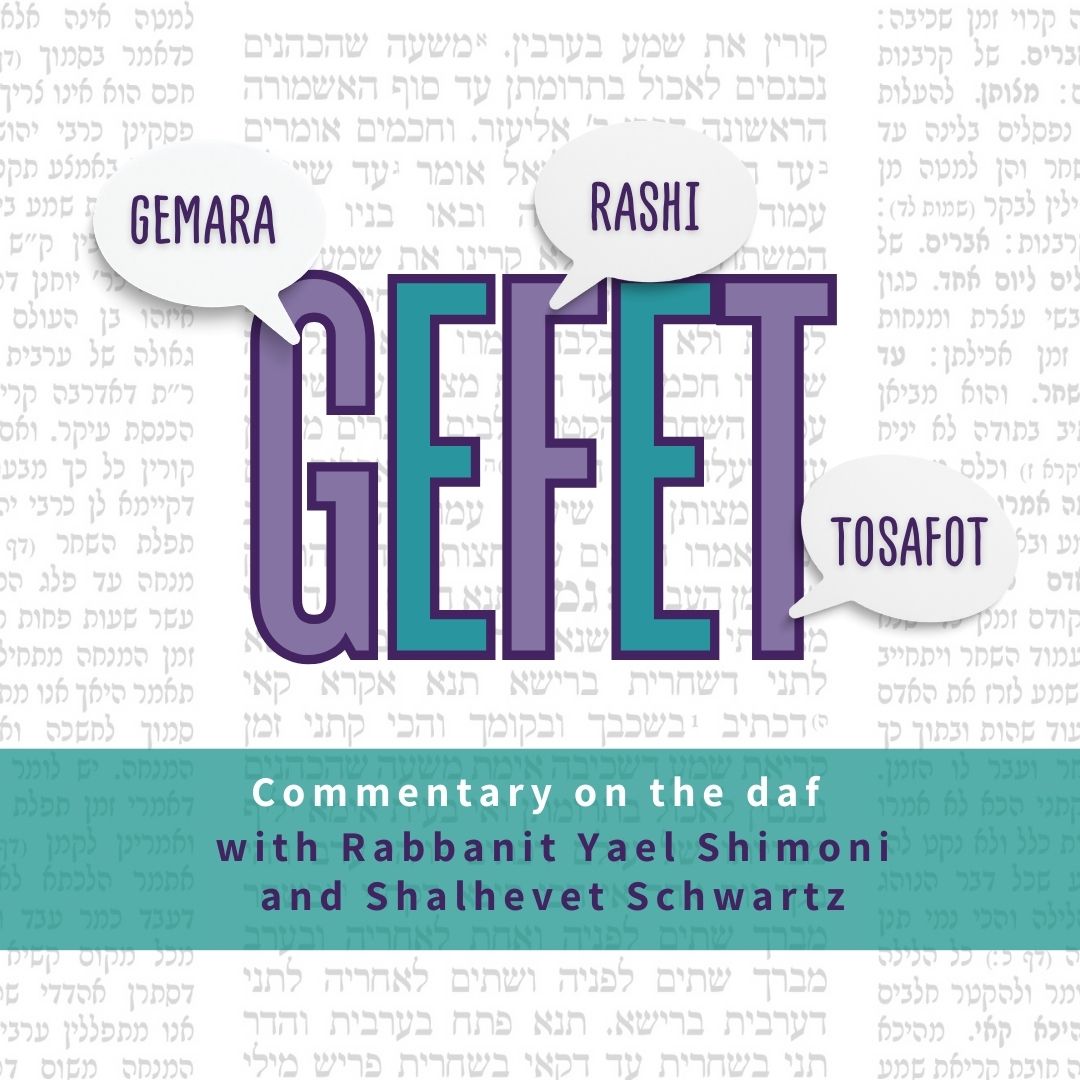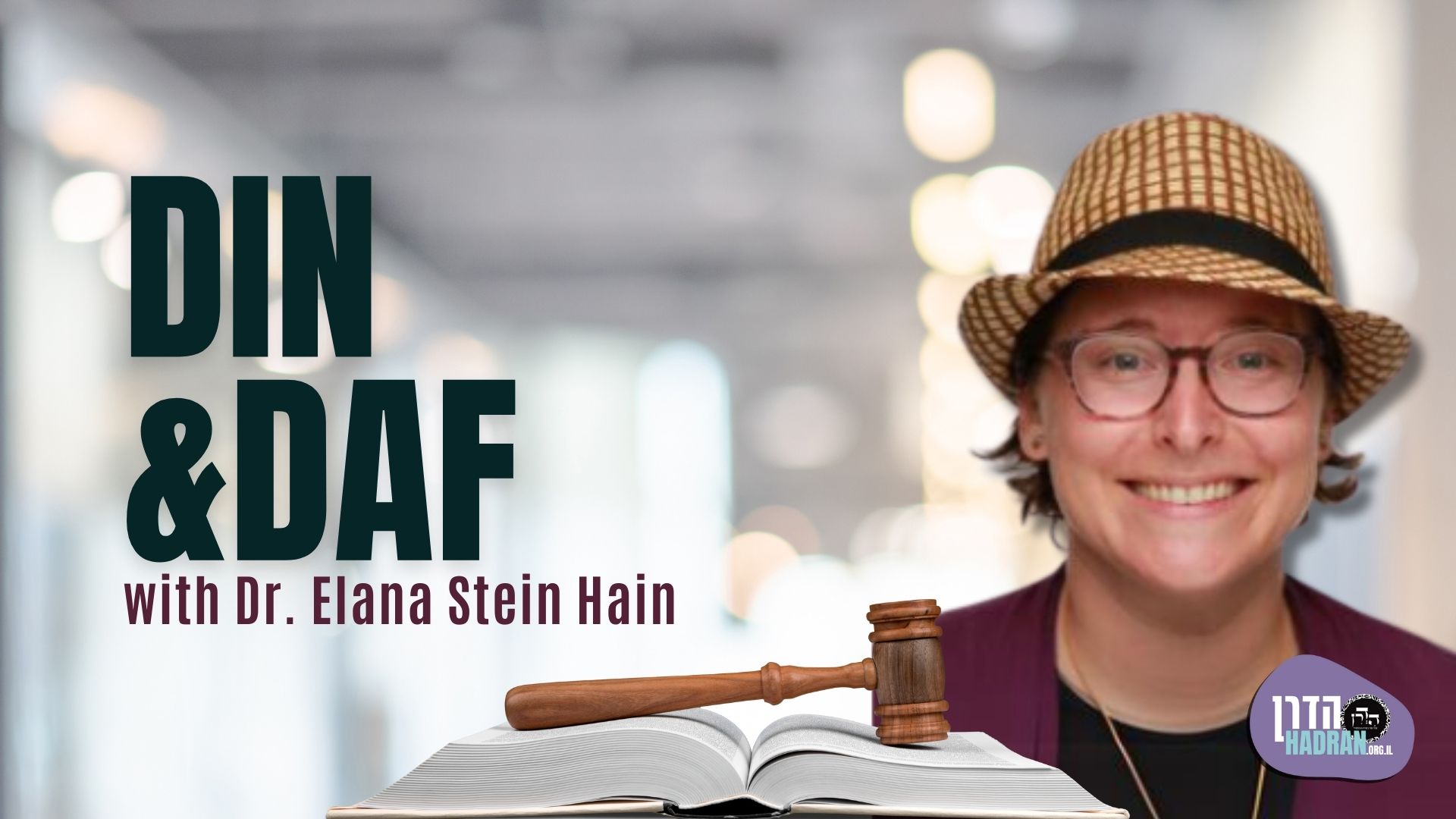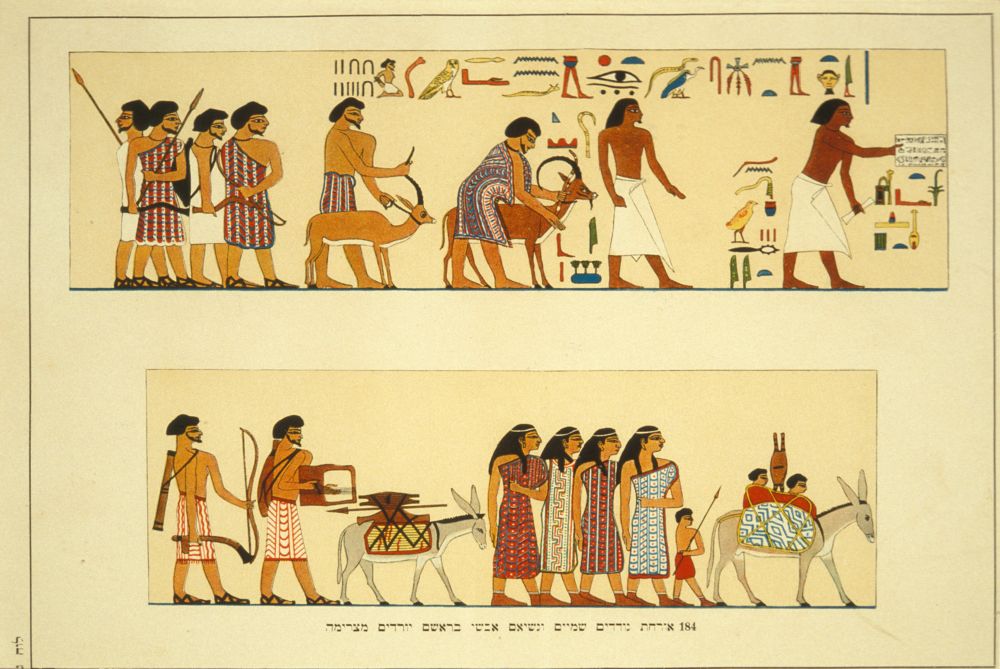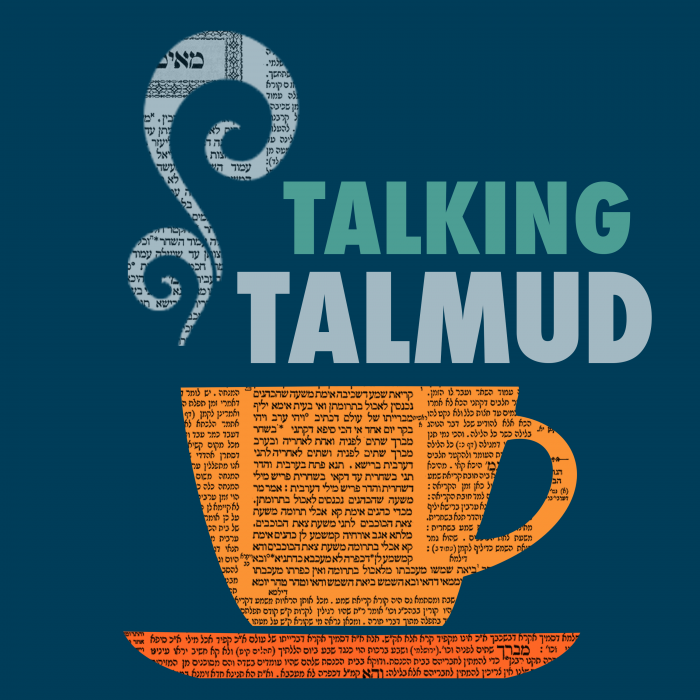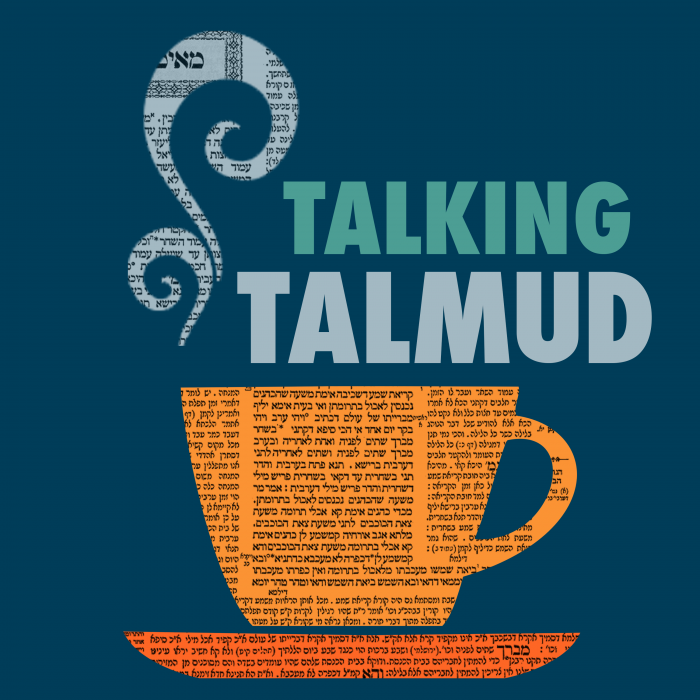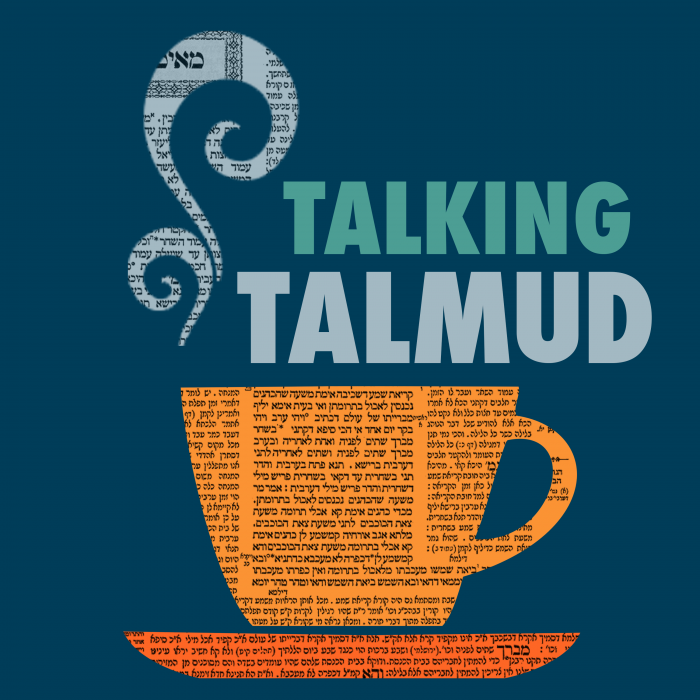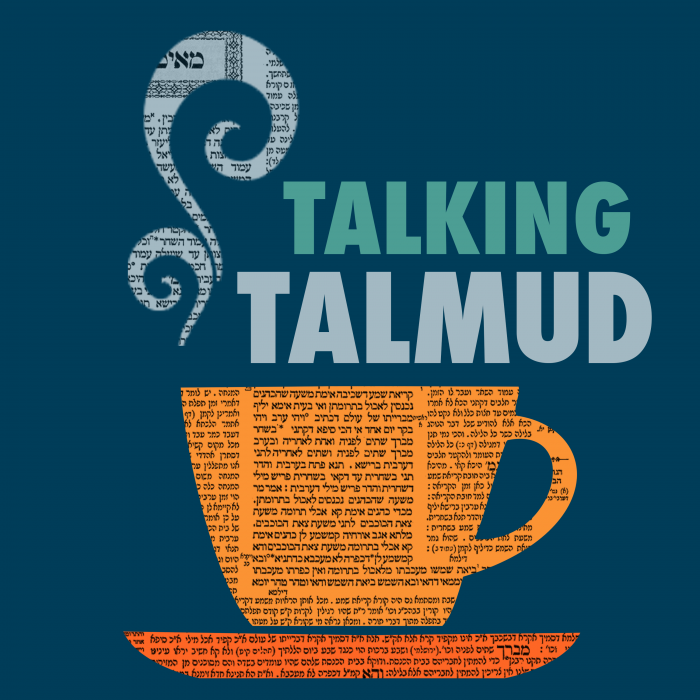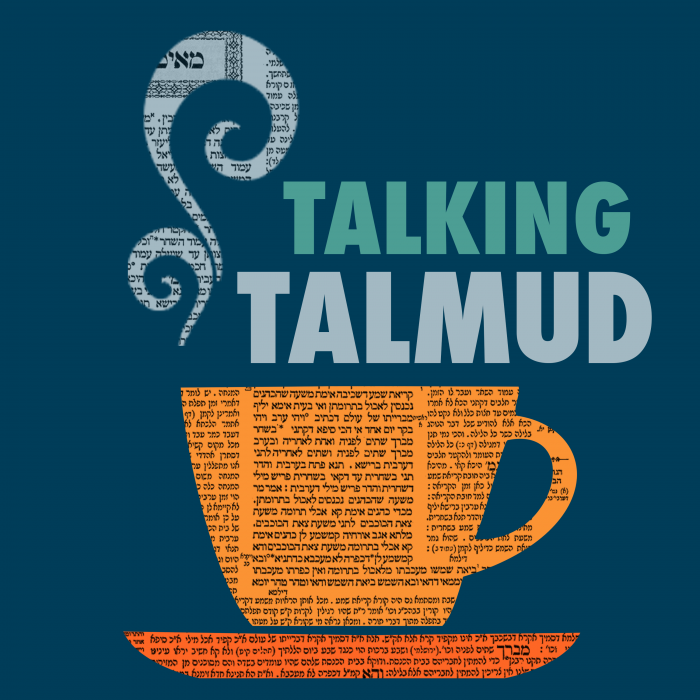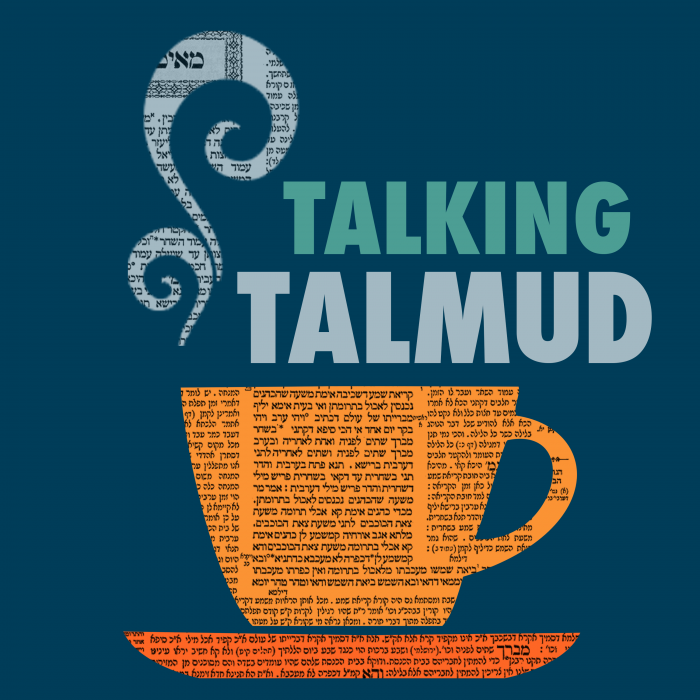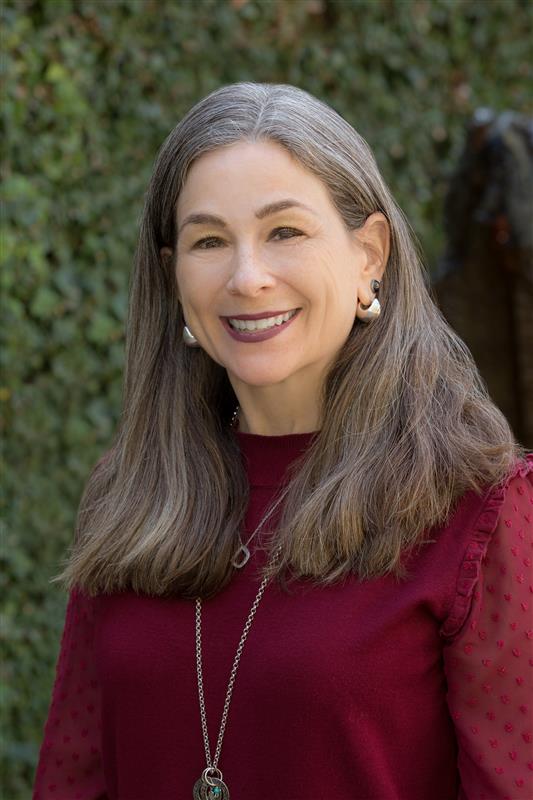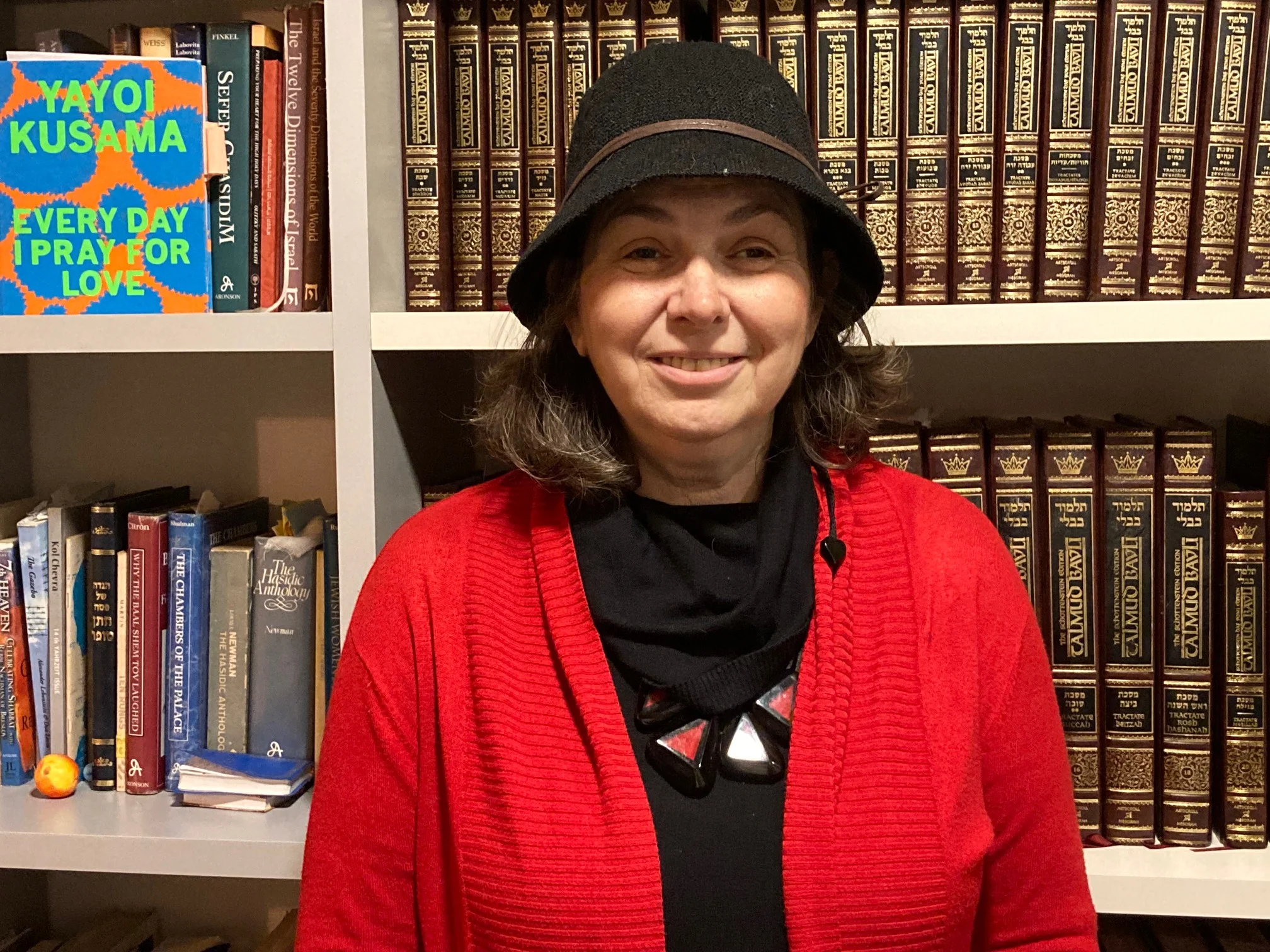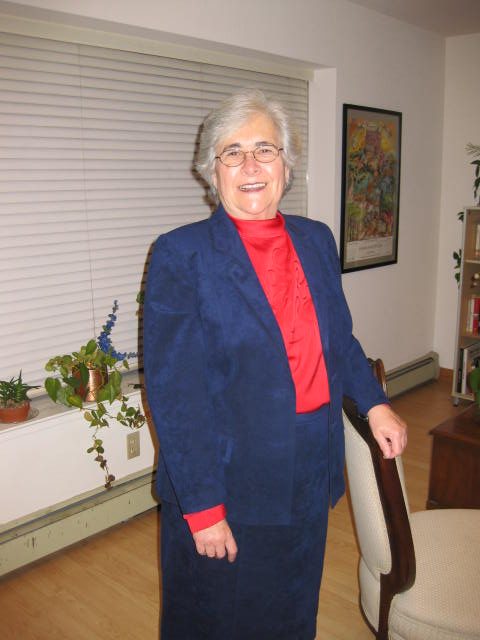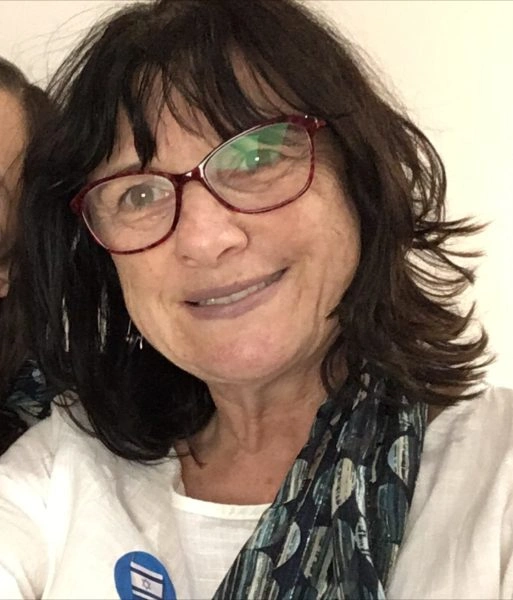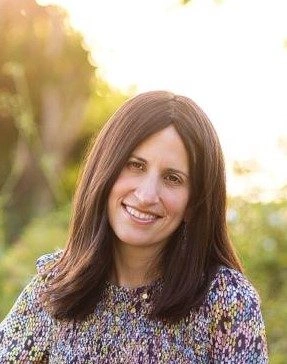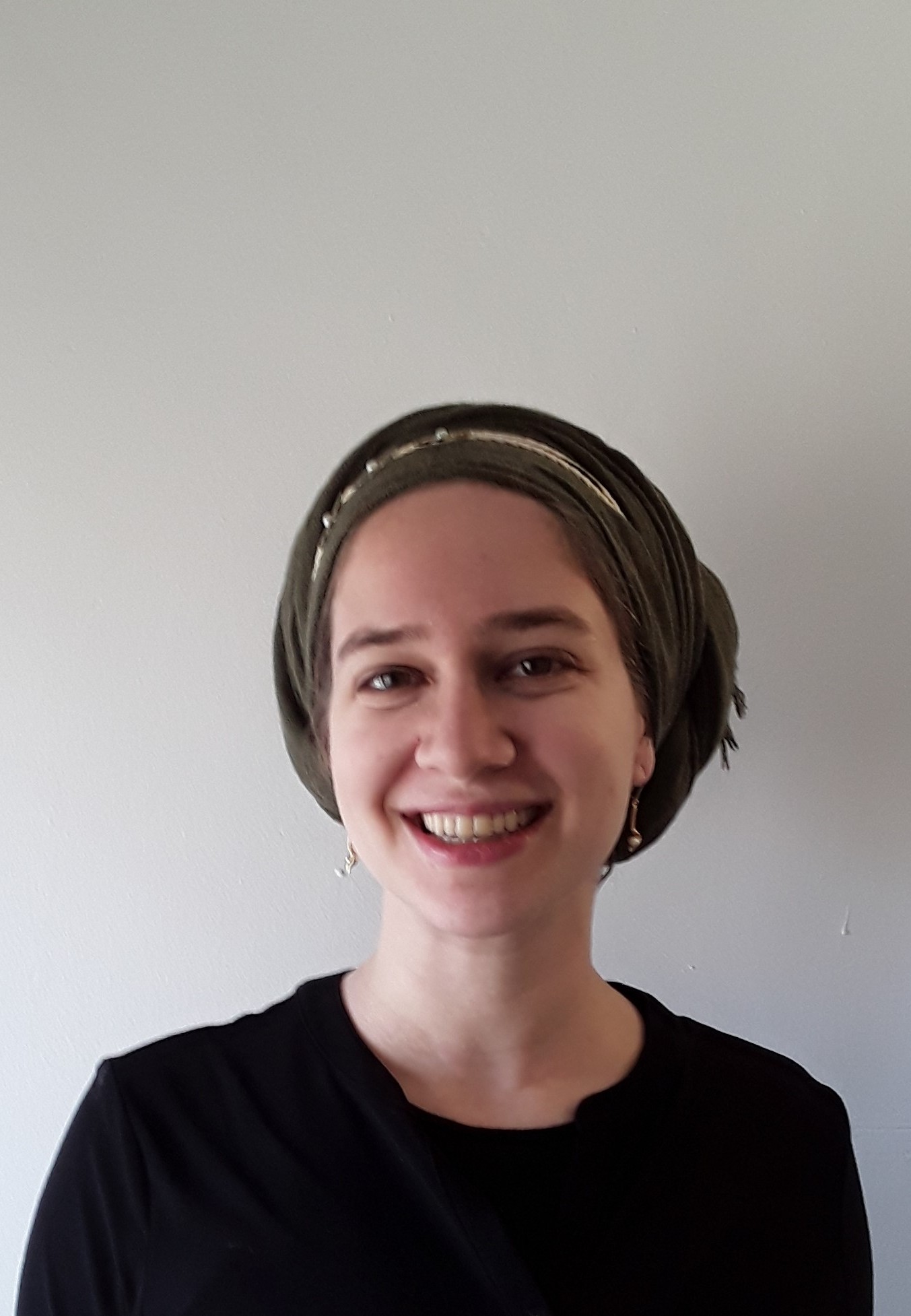If one has a long garment and folds it, does one need to put strings on the folded part? Is the obligation of tzitzit that all four cornered garments one owns should have tzitzit or is it an obligation only if one is wearing a four cornered garment, it must have tzitzit? Or does anyone hold (possibly an angel) that it is an obligation on a person to wear a four corenred garment, thus obligating him in tzitzit? Is one allowed to move strings from one pair of tzitzit to another?
This week’s learning is sponsored by Robert and Paula Cohen in loving memory of Joseph Cohen, Yosef ben Moshe HaCohen, z”l. “He was hard working, loved to sing, esp. as a chazan, and was very dedicated to his family and community.”
Want to dedicate learning? Get started here:

Today’s daily daf tools:
This week’s learning is sponsored by Robert and Paula Cohen in loving memory of Joseph Cohen, Yosef ben Moshe HaCohen, z”l. “He was hard working, loved to sing, esp. as a chazan, and was very dedicated to his family and community.”
Today’s daily daf tools:
Delve Deeper
Broaden your understanding of the topics on this daf with classes and podcasts from top women Talmud scholars.
New to Talmud?
Check out our resources designed to help you navigate a page of Talmud – and study at the pace, level and style that fits you.
The Hadran Women’s Tapestry
Meet the diverse women learning Gemara at Hadran and hear their stories.
Menachot 41
וְהַגָּדוֹל יוֹצֵא בָּהּ דֶּרֶךְ עֲרַאי – חַיֶּיבֶת בְּצִיצִית, אֵין הַקָּטָן מִתְכַּסֶּה בּוֹ רֹאשׁוֹ וְרוּבּוֹ, אַף עַל פִּי שֶׁהַגָּדוֹל יוֹצֵא בָּהּ עֲרַאי – פְּטוּרָה, וְכֵן לְעִנְיַן כִּלְאַיִם.
and an adult goes out in public on occasion while wearing it, it is required to have ritual fringes. But if it is not large enough for a minor to cover his head and most of his body with it, then even if an adult goes out in public on occasion while wearing it, it is exempt from ritual fringes. And so too with regard to diverse kinds, i.e., the prohibition against wearing wool and linen together.
וְהָוֵינַן בַּהּ: מַאי ״וְכֵן לְעִנְיַן כִּלְאַיִם״? אִילֵּימָא וְכֵן לְעִנְיַן אִיסּוּרָא דְכִלְאַיִם, וְהָא אֲנַן תְּנַן: אֵין עֲרַאי בְּכִלְאַיִם!
And we discussed it: What is meant by: And so too with regard to diverse kinds? If we say that it means: And so too with regard to the prohibition of diverse kinds, that if a minor could not cover the majority of his head and body with it, the prohibition of diverse kinds does not apply, that is difficult: But didn’t we learn in a mishna (Kilayim 9:2): There is no exemption with regard to the prohibition of diverse kinds for clothing that an adult would not wear even occasionally in public?
וְאָמַר רַב נַחְמָן בַּר יִצְחָק: וְכֵן לְעִנְיַן סָדִין בְּצִיצִית.
And Rav Naḥman bar Yitzḥak says in explanation: Rather, the baraita means: And so too with regard to whether a linen cloak is required to have ritual fringes. If the cloak is large enough for a minor to cover his head and most of his body with it, then it requires ritual fringes, and wearing the garment with the ritual fringes is not a violation of the prohibition of diverse kinds. But if the garment is smaller than that, it is prohibited to place ritual fringes on it, due to the prohibition of diverse kinds. Therefore, one cannot explain Shmuel’s statement to mean that a cloak that is exempt from ritual fringes because it is too small is not subject to the prohibition of diverse kinds.
אֶלָּא מַאי פְּטוּרָה – הֵטִיל לַמּוּטֶלֶת.
Rather, what is meant by the statement that a cloak that is exempt from ritual fringes is not subject to the prohibition of diverse kinds? It is referring to where one affixed ritual fringes to a garment that already had ritual fringes affixed to it. Even though the second set of ritual fringes is superfluous, nevertheless there is no violation of the prohibition of diverse kinds.
וְהָא אַמְרַהּ רַבִּי זֵירָא חֲדָא זִימְנָא? חֲדָא מִכְּלָל דַּחֲבֶירְתָּהּ אִיתְּמַר.
The Gemara asks: But didn’t Rabbi Zeira already say this one time when he stated that if one attached ritual fringes to a garment that already had ritual fringes attached to it and he then removed the first set of strings, the garment is fit? The Gemara answers: One was stated from the other by inference, and Rabbi Zeira did not state both statements.
תָּנוּ רַבָּנַן: טַלִּית כְּפוּלָה חַיֶּיבֶת בְּצִיצִית, וְרַבִּי שִׁמְעוֹן פּוֹטֵר, וְשָׁוִין שֶׁאִם כְּפָלָהּ וּתְפָרָהּ – שֶׁחַיֶּיבֶת.
§ The Sages taught in a baraita: A very long cloak that is folded in half is required to have ritual fringes at the fold. And Rabbi Shimon deems it exempt it from ritual fringes at the fold because that is not where the corners of the garment are located. And Rabbi Shimon and the Rabbis agree that if he folded it and sewed it, it is required to have ritual fringes at the fold.
תְּפָרָהּ, פְּשִׁיטָא! לָא צְרִיכָא דְּנַקְטַהּ בְּסִיכֵּי.
The Gemara challenges: If one sewed it, it is obvious that it is required to have ritual fringes at the fold. The Gemara explains: No, it is necessary to state this halakha because it is referring to a case where he fastened it with pins rather than sewing it in the conventional manner.
רַבָּה בַּר הוּנָא אִיקְּלַע לְבֵי רָבָא בַּר רַב נַחְמָן, חַזְיֵיהּ דַּהֲוָה מִיכַּסֵּי טַלִּית כְּפוּלָה, וּרְמֵי לֵיהּ חוּטֵי עִילָּוֵי כְּפֵילָא. אִיפְּשִׁיטָא, וַאֲתָא חוּטָא וְקָם לַהֲדֵי רֵישֵׁיהּ.
The Gemara relates that Rabba bar Huna arrived at the house of Rava bar Rav Naḥman, and he saw that Rava bar Rav Naḥman was wearing a cloak that was folded and that he had affixed strings to it on the corners of the fold. The cloak unfolded, and the string that had been on the corner of the fold now came and settled near his head, i.e., in the middle of the cloak, as the two sides of the cloak were in the front and back of Rava bar Rav Naḥman.
אֲמַר לֵיהּ: לָאו הַיְינוּ כָּנָף דִּכְתַב רַחֲמָנָא בְּאוֹרָיְיתָא! אֲתָא שַׁדְיַיהּ, אִיכַּסִּי גְּלִימָא אַחֲרִיתִי.
Rabba bar Huna said to Rava bar Rav Naḥman: This is not the corner of the garment that the Merciful One writes about in the Torah. Rava bar Rav Naḥman went and threw it off, and he covered himself with a different cloak.
אֲמַר לֵיהּ: מִי סָבְרַתְּ חוֹבַת גַּבְרָא הוּא? חוֹבַת טַלִּית הוּא, זִיל רְמִי לַהּ.
Rabba bar Huna said to Rava bar Rav Naḥman: Do you hold that ritual fringes are an obligation incumbent upon the man? That is not so. Rather, it is an obligation that pertains to every cloak that one owns. Therefore, go and affix ritual fringes to it properly.
לֵימָא מְסַיַּיע לֵיהּ: חֲסִידִים הָרִאשׁוֹנִים, כֵּיוָן שֶׁאָרְגוּ בָּהּ שָׁלֹשׁ – הָיוּ מְטִילִין בָּהּ תְּכֵלֶת. שָׁאנֵי חֲסִידִים, דְּמַחְמְרִי אַנַּפְשַׁיְיהוּ.
The Gemara suggests: Let us say that a baraita supports the opinion of Rabba bar Huna: It is told of the early generations of pious men that once they weaved three fingerbreadths of the length of the garment, they would affix the white and sky-blue strings to the first two corners, even though the garment was not yet ready to be worn. This seems to prove that there is an obligation to affix ritual fringes to all the cloaks in one’s possession, even if he is not currently wearing them. The Gemara rejects this proof: The pious men were different, as they would act stringently with themselves. Therefore, one cannot adduce the actual requirement from their behavior.
וּפְלִיגָא דְּמַלְאֲכָא, דְּמַלְאֲכָא אַשְׁכְּחֵיהּ לְרַב קַטִּינָא דְּמִיכַּסֵּי סְדִינָא, אֲמַר לֵיהּ: קַטִּינָא, קַטִּינָא! סְדִינָא בְּקַיְיטָא וְסַרְבָּלָא בְּסִיתְוָא, צִיצִית שֶׁל תְּכֵלֶת מָה תְּהֵא עָלֶיהָ?
The Gemara notes that this disagrees with what an angel said. As an angel found Rav Ketina when he was wearing a linen cloak, which is exempt from ritual fringes. The angel said to him: Ketina, Ketina, if you wear a linen cloak in the summer and a coat [sarbela], which has only two corners and is therefore also exempt from ritual fringes, in the winter, what will become of the ritual fringes of sky-blue wool? As a result, you will never fulfill the mitzva.
אֲמַר לֵיהּ: עָנְשִׁיתוּ אַעֲשֵׂה? אֲמַר לֵיהּ: בִּזְמַן דְּאִיכָּא רִיתְחָא עָנְשִׁינַן.
Rav Ketina said to him: Do you punish us even for failing to fulfill a positive mitzva? The angel said to him: At a time when there is divine anger and judgment, we punish even for the failure to fulfill a positive mitzva.
אִי אָמְרַתְּ בִּשְׁלָמָא חוֹבַת גַּבְרָא הוּא – הַיְינוּ דְּמִחַיַּיב דְּלָא קָא רָמֵי, אֶלָּא אִי אָמְרַתְּ חוֹבַת טַלִּית הוּא – הָא לָא מִיחַיְּיבָא!
The Gemara attempts to draw conclusions from the statement of the angel: Granted, if you say that the mitzva of ritual fringes is an obligation incumbent upon the man, that is why Rav Ketina would be deemed liable at a time of divine anger, as he did not affix ritual fringes to his cloak and thereby neglected the obligation incumbent upon him. But if you say that it is an obligation to attach them to every cloak that one owns, since Rav Ketina’s cloaks were not required to have ritual fringes, he was not obligated to attach ritual fringes to them. Why should he be punished in a time of divine anger?
אֶלָּא מַאי חוֹבַת גַּבְרָא הוּא? נְהִי דְּחַיְּיבֵיהּ רַחֲמָנָא כִּי מִיכַּסֵּי טַלִּית דְּבַת חִיּוּבָא, כִּי מִיכַּסֵּי טַלִּית דְּלָאו בַּת חִיּוּבָא הִיא, מִי חַיְּיבֵיהּ רַחֲמָנָא?
The Gemara responds: Rather, what should one assume, that it is an obligation incumbent upon the man? Even so, granted that the Merciful One rendered him obligated when he is wearing a cloak that has four corners and is therefore subject to the obligation of ritual fringes, but when he is wearing a cloak that is not subject to the obligation of ritual fringes, did the Merciful One deem him obligated?
אֶלָּא הָכִי קָאָמַר לֵיהּ: טַצְדְּקֵי לְמִיפְטַר נַפְשָׁךְ מִצִּיצִית?
Rather, this is what the angel is saying to Rav Ketina: Are you seeking ploys [tatzdeki] to exempt yourself from performing the mitzva of ritual fringes?
אָמַר רַב טוֹבִי בַּר קִיסְנָא אָמַר שְׁמוּאֵל: כְּלֵי קוּפְסָא חַיָּיבִין בְּצִיצִית, וּמוֹדֶה שְׁמוּאֵל בְּזָקֵן שֶׁעֲשָׂאָהּ לִכְבוֹדוֹ שֶׁפְּטוּרָה. מַאי טַעְמָא? ״אֲשֶׁר תְּכַסֶּה בָּהּ״ אָמַר רַחֲמָנָא, הַאי לָאו לְאִיכַּסּוֹיֵי עֲבִידָא.
Rav Tovi bar Kisna says that Shmuel says: Garments that are not being worn but are stored in a box are required to have ritual fringes, because the mitzva pertains to the garment, not the man. But Shmuel concedes in the case of an old man, where the garment was made as a shroud in his honor, that the shroud is exempt. What is the reason for this? The Merciful One states in the Torah that one must place ritual fringes on the corners of garments “with which you cover yourself” (Deuteronomy 22:12). This shroud is not made for the purpose of covering oneself.
בְּהָהִיא שַׁעְתָּא, וַדַּאי רָמֵינַן לֵיהּ, מִשּׁוּם ״לֹעֵג לָרָשׁ חֵרֵף עֹשֵׂהוּ״.
The Gemara comments: At that time, i.e., a person’s burial, we certainly affix ritual fringes to the shroud, because otherwise it would be a violation of: “Whoever mocks the poor blasphemes his Maker” (Proverbs 17:5). If we did not place them, it would be mocking the deceased, as if to taunt him that now he is no longer obligated in mitzvot.
אָמַר רַחֲבָה אָמַר רַבִּי יְהוּדָה: טַלִּית שֶׁנִּקְרְעָה חוּץ לְשָׁלֹשׁ – יִתְפּוֹר, תּוֹךְ שָׁלֹשׁ – לֹא יִתְפּוֹר.
§ Raḥava says that Rabbi Yehuda says: In the case of a cloak that became torn at one of its corners, if it was torn beyond three fingerbreadths from the edge of the garment, one may sew it. But if it was torn within three fingerbreadths of the edge of the garment, then one may not sew it. There is a concern that he might use the thread with which he sewed the garment for the ritual fringes, in which case the strings would be unfit due to the principle: Prepare it, and not from what has already been prepared.
תַּנְיָא נָמֵי הָכִי: טַלִּית שֶׁנִּקְרְעָה, חוּץ לְשָׁלֹשׁ – יִתְפּוֹר, תּוֹךְ שָׁלֹשׁ – רַבִּי מֵאִיר אוֹמֵר: לֹא יִתְפּוֹר, וַחֲכָמִים אוֹמְרִים: יִתְפּוֹר.
The Gemara comments: This halakha is also taught in a baraita: In the case of a cloak that became torn at one of its corners, if it was torn beyond three fingerbreadths from the edge of the garment, one may sew it. But if it was torn within three fingerbreadths of the edge of the garment, Rabbi Meir says: One may not sew it. And the Rabbis say: One may sew it.
וְשָׁוִין שֶׁלֹּא יָבִיא אֲפִילּוּ אַמָּה עַל אַמָּה מִמָּקוֹם אַחֵר וּבָהּ תְּכֵלֶת, וְתוֹלֶה בָּהּ. וְשָׁוִין שֶׁמֵּבִיא תְּכֵלֶת מִמָּקוֹם אַחֵר וְתוֹלֶה בָּהּ,
And Rabbi Meir and the Rabbis agree that one may not bring a piece of cloth, even if it is a square cubit in size, from elsewhere, containing white and sky-blue strings, and attach it to a cloak. This is because one must attach the ritual fringes directly to the corner of the garment, rather than attaching them to a piece of cloth and then attaching that cloth to the garment. And Rabbi Meir and the Rabbis also agree that one may bring white or sky-blue strings from elsewhere and attach them to the garment, i.e., one may remove strings from one garment in order to attach them to another garment.
וּבִלְבַד שֶׁלֹּא תְּהֵא מוּפְסֶקֶת. שָׁמְעַתְּ מִינַּהּ מַתִּירִין מִבֶּגֶד לְבֶגֶד? דִּילְמָא דְּאִי בְּלַאי.
This is permitted provided that the strings are not broken. The Gemara asks: Should one conclude from this baraita that it is always permitted to untie ritual fringes from one garment in order to affix them to another garment? The Gemara rejects this inference: Perhaps the ruling of this baraita applies only if the first garment was worn out and no longer wearable.
תָּנוּ רַבָּנַן: טַלִּית שֶׁכּוּלָּהּ תְּכֵלֶת – כׇּל מִינֵי צִבְעוֹנִין פּוֹטְרִין בָּהּ, חוּץ מִקָּלָא אִילָן.
The Sages taught in a baraita: In the case of a cloak that is made entirely of sky-blue wool, strings of every type of color exempt it, i.e., the ritual fringes that are not tekhelet may be any color except for indigo, a color that is indistinguishable from tekhelet. This indicates that if one attached strings dyed with indigo alongside the strings dyed with tekhelet, the ritual fringes are unfit.
מֵיתִיבִי: טַלִּית אֵין פּוֹטֵר בָּהּ אֶלָּא מִינָהּ. טַלִּית שֶׁכּוּלָּהּ תְּכֵלֶת – מֵבִיא תְּכֵלֶת וְדָבָר אַחֵר וְתוֹלֶה בָּהּ, וְקָלָא אִילָן לֹא יָבִיא, וְאִם הֵבִיא – כָּשֵׁר.
The Gemara raises an objection from a baraita: A cloak is exempted only by strings of its own type. In the case of a cloak that is made entirely of sky-blue wool, one brings sky-blue [tekhelet] strings and something else, i.e., strings of a different color, and attaches them to the cloak. And he may not bring strings dyed with indigo along with the strings dyed with tekhelet. But if he brought strings dyed with indigo together with the strings dyed with tekhelet, the ritual fringes are fit.
אָמַר רַב נַחְמָן בַּר יִצְחָק: לָא קַשְׁיָא, כָּאן בְּטַלִּית בַּת אַרְבָּעָה חוּטִין, כָּאן בְּטַלִּית בַּת שְׁמוֹנָה חוּטִין.
Rav Naḥman bar Yitzḥak said: This is not difficult, because here, in the baraita that holds that the ritual fringes are fit after the fact, it is referring to a cloak that has only four strings, two of tekhelet and two of indigo. There, in the baraita that holds that the ritual fringes are unfit after the fact, it is referring to a cloak that has eight strings, four of tekhelet and four of indigo. In this case, the Sages were concerned that one would take the four indigo strings from this garment and use them in another garment, thinking that they were tekhelet.
שָׁמְעַתְּ מִינַּהּ מַתִּירִין מִבֶּגֶד לְבֶגֶד? דִּלְמָא דְּאִי עֲבַד.
The Gemara asks: Should you conclude from the fact that the Sages were concerned lest one take the indigo strings from this garment for use in another garment that in general one may untie ritual fringes from one garment in order to affix them to another garment? The Gemara responds: Perhaps their concern was that if one did transfer the strings, he might mistake indigo for tekhelet, but it is not permitted to transfer the strings ab initio.
אִיתְּמַר, רַב אָמַר: אֵין מַתִּירִין מִבֶּגֶד לְבֶגֶד, וּשְׁמוּאֵל אָמַר: מַתִּירִין מִבֶּגֶד לְבֶגֶד.
It was stated that there is a dispute between amora’im with regard to this halakha. Rav says: One may not untie ritual fringes from one garment in order to affix them to another garment. And Shmuel says: One may untie them from one garment and affix them to another garment.
רַב אָמַר: אֵין מַדְלִיקִין מִנֵּר לְנֵר, וּשְׁמוּאֵל אָמַר: מַדְלִיקִין מִנֵּר לְנֵר.
The Gemara cites additional disputes between Rav and Shmuel: Rav says: One may not light from one Hanukkah lamp to another Hanukkah lamp. And Shmuel says: One may light from one Hanukkah lamp to another Hanukkah lamp.
רַב אָמַר: אֵין הֲלָכָה כְּרַבִּי שִׁמְעוֹן בִּגְרִירָה, וּשְׁמוּאֵל אָמַר: הֲלָכָה כְּרַבִּי שִׁמְעוֹן בִּגְרִירָה.
Rabbi Shimon rules that it is permitted to drag items on Shabbat despite the possibility that one might thereby create a furrow in the ground. Creating a furrow is a labor prohibited on Shabbat, but since he does not intend to create the furrow, and it is not certain that a furrow will be created, dragging the item is permitted. Rav says: The halakha is not in accordance with the opinion of Rabbi Shimon with regard to dragging items on Shabbat. And Shmuel says that the halakha is in accordance with the opinion of Rabbi Shimon with regard to dragging items on Shabbat.
אָמַר אַבָּיֵי: כֹּל מִילֵּי דְּמָר עָבֵיד כְּרַב, לְבַר מֵהָנֵי תְּלָת דְּעָבֵיד כִּשְׁמוּאֵל: מַתִּירִין מִבֶּגֶד לְבֶגֶד, וּמַדְלִיקִין מִנֵּר לְנֵר, וַהֲלָכָה כְּרַבִּי שִׁמְעוֹן בִּגְרִירָה.
Abaye said: In all halakhic matters of the Master, Rabba, he conducted himself in accordance with the opinion of Rav, except these three where he conducted himself in accordance with the opinion of Shmuel. He ruled that one may untie ritual fringes from one garment in order to affix them to another garment, and one may light from one Hanukkah lamp to another Hanukkah lamp, and the halakha is in accordance with the opinion of Rabbi Shimon with regard to dragging items on Shabbat.
דְּתַנְיָא, רַבִּי שִׁמְעוֹן אוֹמֵר: גּוֹרֵר אָדָם מִטָּה, כִּסֵּא וְסַפְסָל, וּבִלְבַד שֶׁלֹּא יִתְכַּוֵּין לַעֲשׂוֹת חָרִיץ.
As it is taught in a baraita that Rabbi Shimon says: A person may drag a bed, chair, or bench on the ground on Shabbat, provided that he does not intend to make a furrow in the ground. Even if a furrow is formed inadvertently, one does not need to be concerned.
רַב יְהוּדָה מָסַר לֵיהּ לְקַצָּרָא, רַב חֲנִינָא עָבֵיד לֵהּ סִיסָא, רָבִינָא חָיֵיט לְהוּ מֵיחָט.
The Gemara relates that Rav Yehuda would give his garments containing ritual fringes to a laundryman and was not concerned that the strings dyed with tekhelet might become detached and that the laundryman would replace them with strings dyed with indigo. Rav Ḥanina would form a bundle with his ritual fringes so that they would not become detached while they were being laundered. Ravina would tuck them into a pocket he formed on the garment and sew the cover of the pocket in order to protect the ritual fringes.
תָּנוּ רַבָּנַן: כַּמָּה חוּטִין הוּא נוֹתֵן? בֵּית שַׁמַּאי אוֹמְרִים: אַרְבָּעָה, וּבֵית הִלֵּל אוֹמְרִים: שְׁלֹשָׁה.
§ The Sages taught in a baraita: How many strings does one place on a garment? Beit Shammai say: Four strings are inserted into the hole in the garment, so that there are eight strings hanging down altogether, and Beit Hillel say: Three strings are inserted into the garment.
וְכַמָּה תְּהֵא מְשׁוּלֶּשֶׁת? בֵּית שַׁמַּאי אוֹמְרִים: אַרְבַּע, וּבֵית הִלֵּל אוֹמְרִים: שָׁלֹשׁ. וְשָׁלֹשׁ שֶׁבֵּית הִלֵּל אוֹמְרִים, אַחַת מֵאַרְבַּע בְּטֶפַח שֶׁל כׇּל אָדָם. אָמַר רַב פָּפָּא: טֶפַח דְּאוֹרָיְיתָא אַרְבַּע בְּגוּדָל, שֵׁית בִּקְטַנָּה, חֲמֵשׁ בְּתִילְתָּא.
And how much should be hanging [meshulleshet] beyond the knots and windings? Beit Shammai say: Four fingerbreadths, and Beit Hillel say: Three fingerbreadths. And the three fingerbreadths that Beit Hillel say should be hanging are each one-fourth of a handbreadth [tefaḥ] of any average person. The Gemara notes that Rav Pappa said: The handbreadth of the Torah is four fingerbreadths if measured by the thumb; six fingerbreadths if measured by the smallest finger; and five if measured by the third, i.e., the middle, finger.
אָמַר רַב הוּנָא: אַרְבָּעָה בְּתוֹךְ אַרְבַּע, וּמְשׁוּלֶּשֶׁת אַרְבַּע, וְרַב יְהוּדָה אָמַר: שְׁלֹשָׁה בְּתוֹךְ שָׁלֹשׁ, מְשׁוּלֶּשֶׁת שָׁלֹשׁ.
Rav Huna says that the halakha is: One must attach four strings within four fingerbreadths of the edge of the garment, and they should hang down four fingerbreadths beyond the knots and windings. And Rav Yehuda says: One must attach three strings within three fingerbreadths of the edge of the garment, and they should hang down three fingerbreadths beyond the knots and windings.
אָמַר רַב פָּפָּא, הִלְכְתָא: אַרְבָּעָה בְּתוֹךְ שָׁלֹשׁ, מְשׁוּלֶּשֶׁת אַרְבַּע.
Rav Pappa says that the halakha is that one must attach four strings within three fingerbreadths of the edge of the garment, and they should hang down four fingerbreadths beyond the knots and windings.
לְמֵימְרָא דְּאִית לְהוּ שִׁיעוּרָא, וּרְמִינְהוּ: ״צִיצִית״ – אֵין צִיצִית אֶלָּא יוֹצֵא, וְאֵין צִיצִית אֶלָּא מַשֶּׁהוּ, וּכְבָר עָלוּ זִקְנֵי בֵּית שַׁמַּאי וְזִקְנֵי בֵּית הִלֵּל לַעֲלִיַּית יוֹחָנָן בֶּן בְּתִירָא, וְאָמְרוּ: צִיצִית אֵין לָהּ שִׁיעוּר; כַּיּוֹצֵא בּוֹ, לוּלָב אֵין בּוֹ שִׁיעוּר.
The Gemara asks: Is this to say that ritual fringes have a required measure? And the Gemara raises a contradiction to this from a baraita: The verse states: “That they prepare for themselves strings” (Numbers 15:38). Strings are nothing other than what emerges from the corner of the garment, and the term strings indicates only that there must be strings of any length. And it already occurred that the elders of Beit Shammai and the elders of Beit Hillel ascended to the attic of Yoḥanan ben Beteira, and they discussed the matter and said: Ritual fringes have no measure. Similarly, a lulav has no measure.
מַאי לָאו אֵין לָהּ שִׁיעוּר כְּלָל? לָא,
What, does this not mean that ritual fringes have no required measure at all? The Gemara answers: No,


